Used Kites serve a purpose; we know, as we’ve been there. If you’re a beginner, or you’re on a budget, second-hand kitesurfing equipment offers an affordable option for you to grab a bargain, or your first full kitesurfing package; an exciting moment that signifies your commitment to becoming a fully fledged kitesurfer. In such situations, investing in a new package can seem like a foolhardy investment, especially if it’s going to spend time being slammed on the water, or dragged across shingle and sand; again, all part of the learning process.
In fifteen years of experience, we’ve seen the market for second hand gear ebb and flow, and consumer purchasing trends change from new to old kit, online to in-shop, and vica-versa. It’s fair to say that we know what we’re talking about. As, such it’s also true to say that there are both good and bad ways to shop online. We’ve written this Used Kitegear Buyer’s Guide to ensure that you have the right knowledge of the market to make informed choices. We hope you enjoy reading our Used Kitegear Buyer’s Guide.
Good Gear VS Bad
Kitesurfing gear wears down. Sun, wind, sand and strain are all thrown into a heady mix of factors that take a toll. A common misconception amongst consumers is that an item’s age is a good indication of it’s condition. However, in many cases, older items can be bought new, stored away for waiting for that perfect day, and then never see the light of day, possibly for years. Conversely, an item that is one season old can be used intensely through a summer, and is therefore in worse condition than the older kite. This begs the question, what then indicates the condition of each item? Lets go through them.
Kites
Especially with kites, close inspection of the material will provide clues of the history.
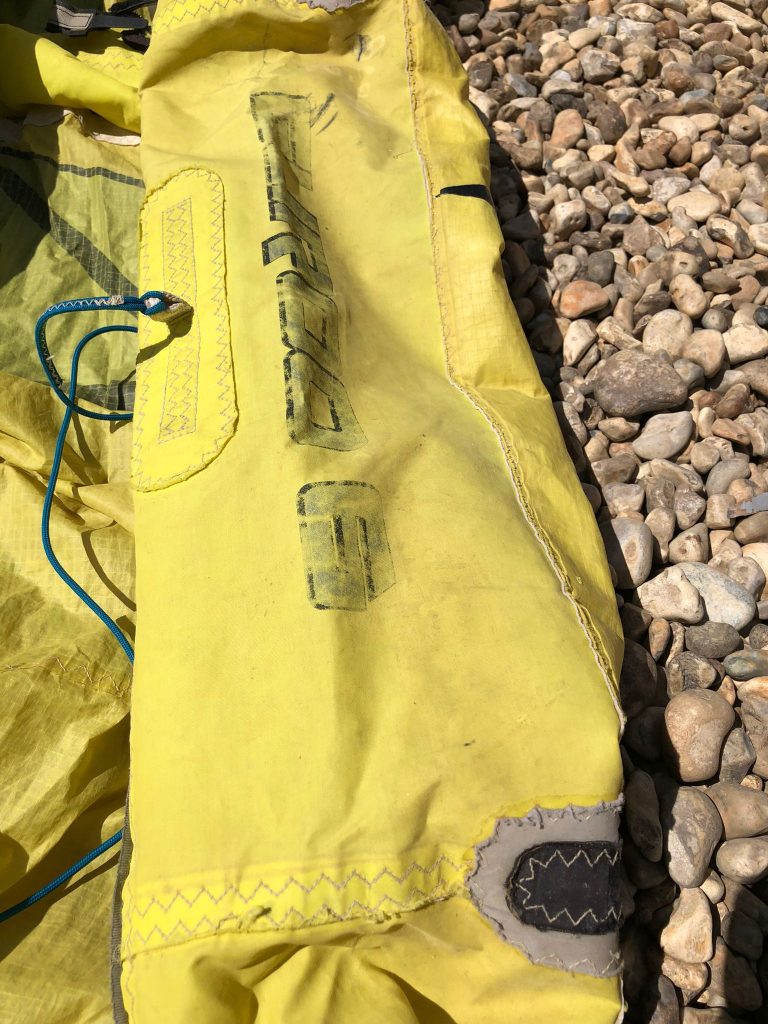
- Take a look at the condition of the canopy material. Does it appear relatively consistent in it’s appearance at a close look? Or does it resemble something like tissue paper that’s been scrunched up, with a patch work of tiny criss-crossing lines. Each of these lines represents a week point, resultant of being flown, inflated, deflated, unpacked and packed many times, which ultimately compromise the kites integrity.
- You can check for small holes and tears in the canopy by inflating it in the dark, and see where the light comes through when put against a light. These generally result from the kite not being well looked after. Using shingle to weigh it down, for example.
- Bridles. These tend to be the lesser wearing part of kite. If they appear a little frayed, thin in areas, or inconsistent in colour, this is an indication of significant use.
Boards
These also get their fair share of abuse. Being placed in and out of cars, chucked down on beaches, and ridden up sand banks, all have an erosive effect.
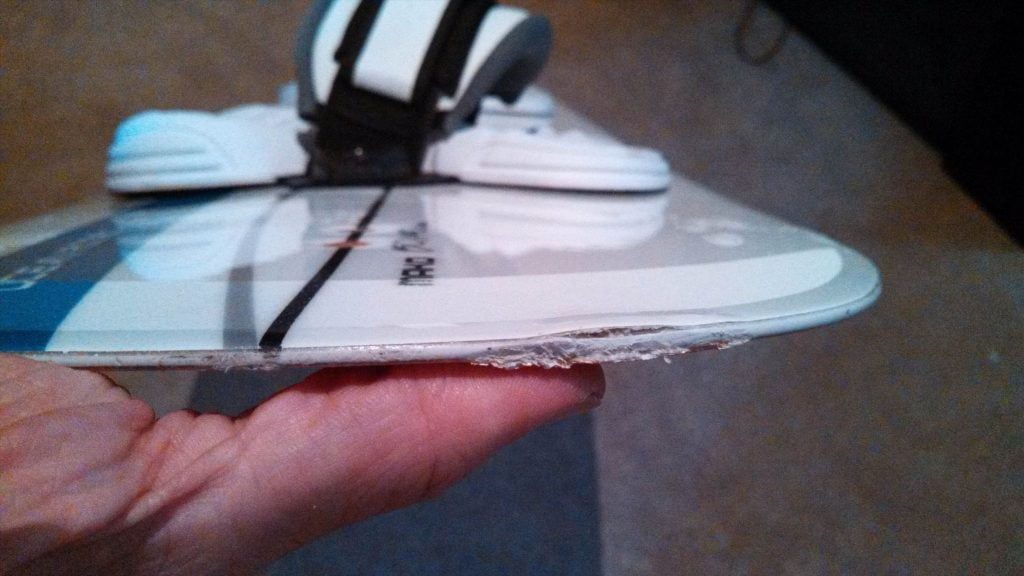
- Delamination. This is when the protecting plastic film placed on the upper and lower sides becomes loose, and begins to show as a flap. More an issue with older boards, this occurs with a combination of poor construction practices and rigorous use. If indicated, avoid it.
- Edge wear. Particularly if ridden aggressively, the edges of the board can become rounded and discoloured. This makes them marginally less effective at holding an edge, and can make them more liable to delamination. A reasonable repair is possible with the application of a new epoxy edge.
- Fin wear. Compare the original length of the fin with it’s current length. These wear over time, again, particularly if ridden aggressively. These can be replaced if needs be.
- Bolts. Can bolts be undone? Ingression of salt water and corrosion of threads can make bolts reluctant to budge, leading to stripped heads, and a nightmare when it inevitably comes to replacing foot straps or fins.
- Dents. Surf and foil boards are hollow in the middle. Denting of the top surface can occur if used aggressively, especially in choppy conditions and with jumping. Take a look across the surface for indentations and inconsistencies.
Bar and lines
These always need to be in good condition. A line that snaps when loaded can be extremely dangerous for both rider and other beach users.
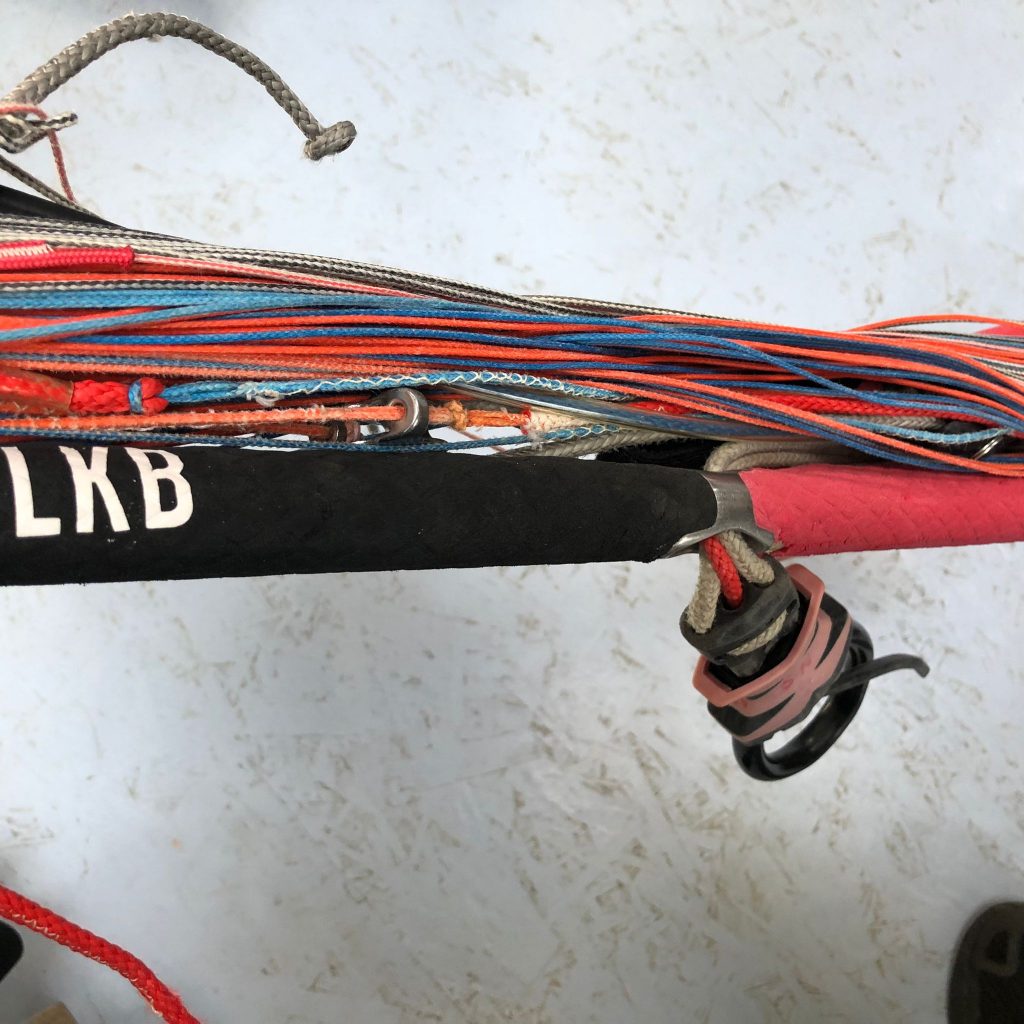
- Like kite bridles, check lines for any fraying, inconsistency in colour, or thinning. Line flexibility is also a good indication of wear. Bend the line 180 degrees using your fingers. If the line is pliant, this is an indication of wear.
- The bar. These are high stress points, and there have been stories of them snapping mid session. What is it’s history? If it’s a poorly manufactured bar, has it been broken and repaired? Check hand grips for indications of wear, and do your research on specific models..
- Safety gear. It’s very important to check that the quick release operates properly, along with the other safety hardware. In short, check the functionality of the entire setup.
Harness
Ideally, harnesses should be tried on before being bought to ensure functionality and comfort.
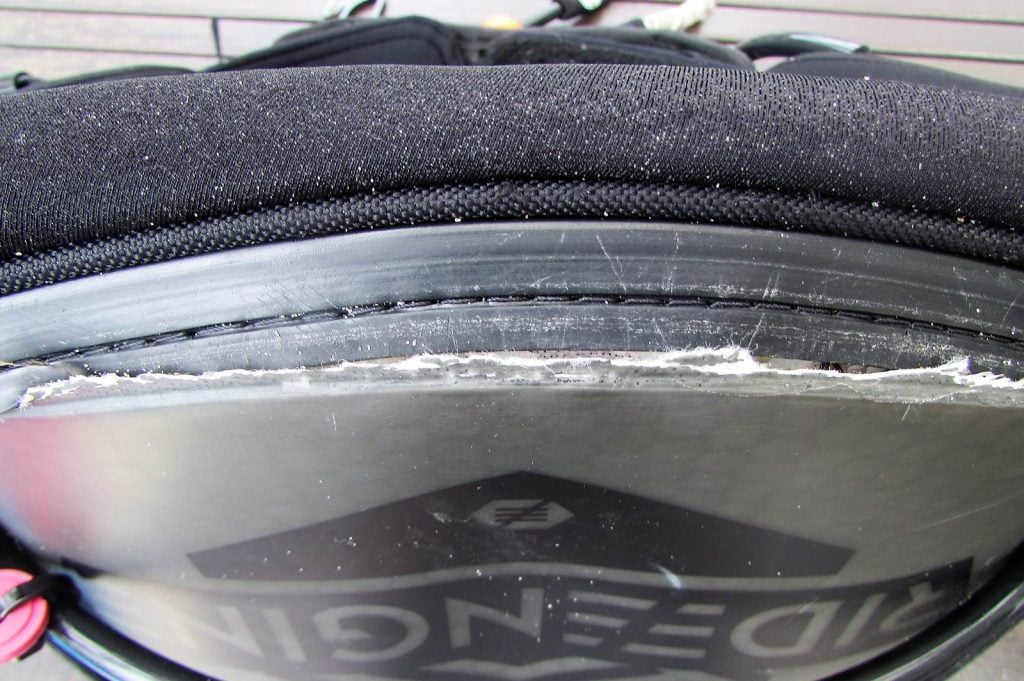
- Check the spreader bar. Although constructed with stainless steel, these are not impervious to corrosion, and it’s important to ensure that they are in optimal condition.
- Fraying of webbing. Strands of fibres around the edges are a sign of high use, and can indicate the condition of the stitching.
- Check the plastic hardware, including the buckles. These wear with use, and the harness is of little use if these do not function correctly. They car be replaced if needs be.
So there is a lot to consider when buying second hand gear. How can you be sure that what you are buying provides value for money and is suitable for further use?
The Problem with Ebay and Facebook Marketplace
Condition
As you can see from this used kitegear buyer’s guide, there are many observations and considerations that need to be made to ensure that you are getting a piece of kit that will last, and the problem with buying online is that it’s impossible to carry many of these checks out. For example, it’s hard to judge the condition of a kite’s canopy from an online photo, or to look at the finer details of a set of lines that indicates whether they are fit for use. In short, there is no guarantee to you. Furthermore, beginner kitesurfers may not have the experience and eye that enables them to differentiate between good and bad. You can of course ask these questions, but you are unable to judge for yourself through your own observations.
Incompatibilities
There are many packages available online. We’ve heard from customers over the years who have bought these and have found that their lines don’t fit their kite, or the safety system doesn’t marry with the harness. Equipment can get mixed and muddled, and it’s obviously disappointing if a lack of due consideration results in a package that doesn’t work collectively. Furthermore, the fusion of incompatible components through inventive improvisation is dangerous and strongly discouraged.
Old stuff
There’s a lot of this floating around on Ebay, partly as no one wants to buy it. Old kite gear can be dangerous, as safety features such as de-power ability were not integrated into their design. Articles post 2007 are generally considered safer owing to fundamental change in design and construction. These items are particularly appealing to beginners as they are cheap, yet will not provide performance or stand the test of further learning.
Skill level
As mentioned, items that are inappropriate for low skill levels can masquerade as a good choice for beginners, as they tend to be the cheapest option. The C-kite is the perfect example of this. More recently, consumer trends have veered away from these designs as they are typically not user friendly. Reduced demand has led to minimal prices that appeal to beginners. These kites are harder to fly (re-launch is difficult), less easy to de-power in a tricky situation, and can raise frustration levels to the point where flyers are about ready to give up. Not a good choice for beginners.
Retail experience
When purchasing a second hand item, it’s important to ask the owner questions, such as whether the board profile is right for your level of experience. If you are buying from an inexperienced rider who’s decided kitesurfing is not for them, the answers can fall short. Also, particularly for beginners, post-purchase support can be a valuable assurance, and is a useful tool when getting to understand your new setup; to be able to pop into the shop and ask for a team member to take a look at your pig-tail setup, for example. These are not typically part of the package when buying online through Ebay or Facebook Marketplace.
In short, obtaining the item is only half of what is required; assessment, advice, and further support are key in purchasing used kitesurfing gear, and these are very difficult to deliver when buying online from an individual.
How We Do Things Differently
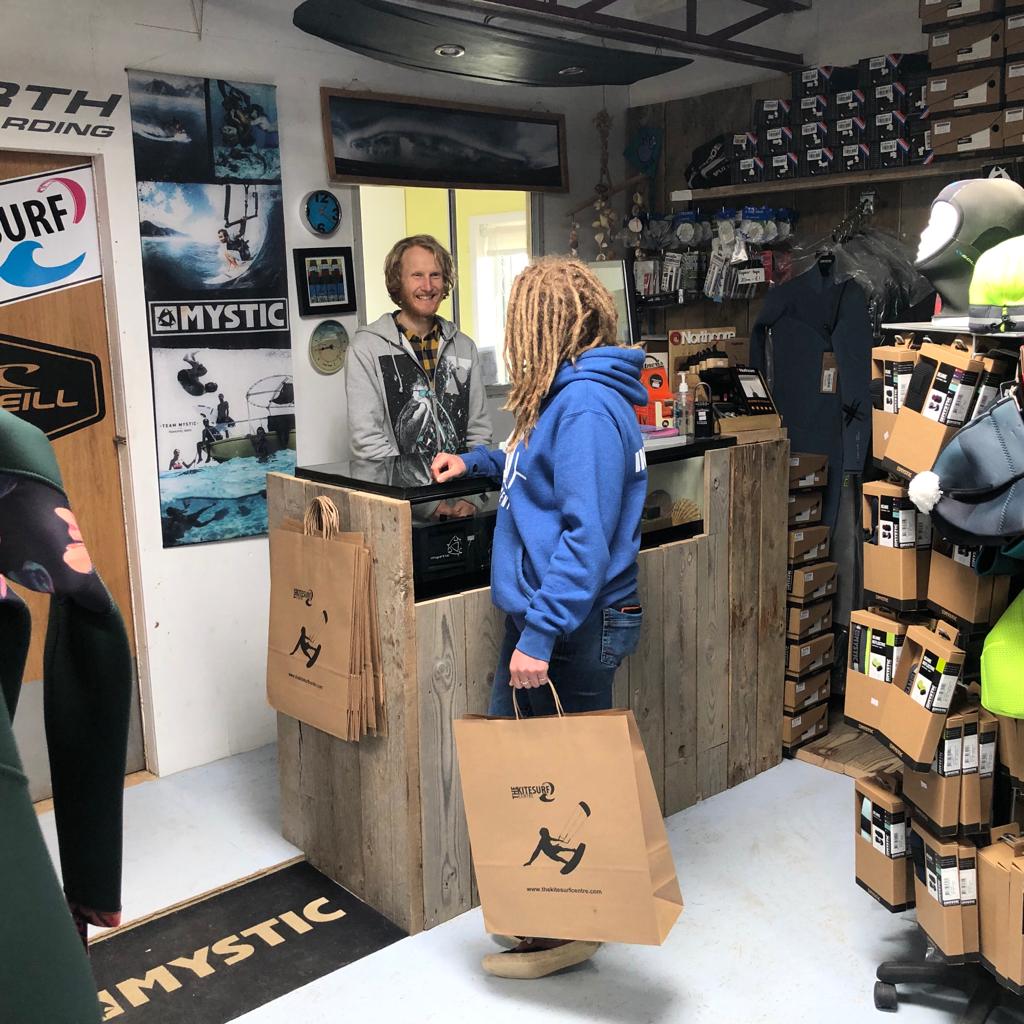
Experience
With over 10 years in the business, we at The Kitesurf Centre understand the value of face-to-face or over-the-phone guidance. We are committed to ensuring that our customers receive that extra mile of support; to iron out those important technicalities, that can make all the difference between a happy purchase and a complete let down. We were all at that point once!
A thorough check
Whether you’re buying in-shop or online, all our second-hand gear is thoroughly checked to ensure that it is in good working order. When we receive an item, a team member commits time and experience to a comprehensive check so we can guarantee that the item is fit for use. In short, if we wouldn’t use it, we won’t sell it!
Warranty
We offer a 6 month warranty on all second hand/used purchases from The Kitesurf Centre, subject to limitations. For more information, click here
Further support
By phone or face-to-face, you can tap into our endless product knowledge, including our own rider experience. If you are a beginner, we will advise on whether an item is appropriate for you, and you can ask us any question you wish. Furthermore, we offer ongoing guidance after you’ve made your purchase; showing you how your safety system works next time you come to the beach, for example. We like to look after our customers.
Final Word
Buying on Ebay and Facebook Marketplace can be a good option for those who have the nous necessary for them to understand what they are getting. If you don’t, then soliciting the knowledge and experience of a retail specialist is well worthwhile to ensure that you don’t end up with dud gear, or kit that is difficult, or even dangerous to use. We hope you’ve found our Used Kitegear Buyer’s Guide helpful.
